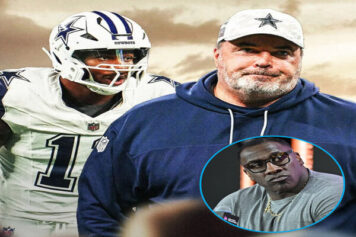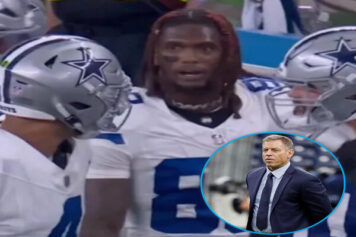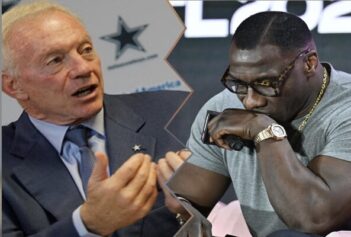LeSean McCoy’s silence has not gone unnoticed. It’s not just the highlights that have become scant in 2014.
The brash, outspoken Eagles running back has been somewhat reticent compared to year’s past when he would rile up opposing defenders like he did with his infamous kerfuffle with the Giants Osi Umenyiora.
He also didn’t respond to an accusation of cowardice by Seattle’s third-year linebacker Bobby Wagner.
"We really wanted to make sure he felt us every single time he got the ball," Wagner said this week, per KIRO-AM. "There was one play he fell back. It was me and him in the hole and he just fell down. He didn't want no part of the contact, so I think that probably got to him."
Criticism of that nature should sting over the open wound of what’s been an underwhelming season for a running back who dubbed himself the NFL’s best back and wondered aloud if he could eclipse 2,000 yards in Chip Kelly’s offense before Adrian Peterson was caught red-handed dispensing unreasonable levels of corporal punishments to four-year-olds.
The leading rusher in 2013 hasn’t been quite himself in 2014. His yards per carry average has dipped by a yard a day, his explosive plays have dwindled and his usage has been cut.
In part because of the Eagles offense quickly falling into a rut, the Eagles went away from McCoy and the run on Sunday Night Football against the Cowboys. It wasn’t just a one-game adjustment either. It’s been a prevailing them of the season as a whole.
The Eagles may be gliding somewhat lower and need a little help, but they’re still in the playoff hunt. However, they may want to take a page out of Dallas’ playbook and rely on their rushing attack a little more—not less.
This season, McCoy’s been the NFC East’s penultimate workhorse back with the McCoy surname behind Washington’s quarterback Colt. The latent worry is that this shift isn’t temporary, but the beginning of a downward trajectory for the 26-year-old.
Ten years ago, Football Outsiders’ Aaron Schatz of Football Outsiders introduced the Rule of 370 into football lexicon.
Football Outsiders’ summarizes the rule as such: "A running back with 370 or more carries during the regular season will usually suffer either a major injury or loss of effectiveness the following year, unless he is named Eric Dickerson."
Curtis Martin and his bone-on-bone knee grinders can probably be added as an addendum as he defied convention and age by fighting arthritis and linebackers alike, well into his 30s.
The 370 rule is why DeMarco Murray’s agent is biting his fingernails down to a nub whenever his client takes another carry, bounces around a tangled web of 300-pound behemoths and 250-pound missiles darting in from five yards behind the line of scrimmage with a head steam, then get dragged to the carpet, rinse and repeat.
Larry Johnson’s career is the golden example of how overuse can wreck a tailback.
After backing up Priest Holmes during his first two seasons in Kansas City, Johnson ran for 37 touchdowns and 3,500 yards in two seasons in Herm Edwards’ conservative offense. In his second season, Johnson would set a single-season NFL record with 416 carries during the ’06 campaign at the age of 27. Johnson was given an extension in the offseason, making him the NFL’s highest paid back, however, he suffered a non-contact season-ending foot injury in Week 9 against Green Bay and ultimately, never came close to 1,000 yards or played a full season as the starter again.
Murray and McCoy are both 26.
It’s why there shouldn’t even be a question about whether Murray, who was on pace for 400 carries and 1,900 yards, is the NFL MVP 14 weeks into the season.
That sort of punishment wouldn’t bode well for a lithe 5-10, 215 pounder who dances around would-be-tacklers like a large scat back and has missed a litany of games due to minor injuries.
Which brings us back to the shade Wagner threw on Shady and the anomaly of Dickerson, who ran for 390 as a rookie, 379 in his record-setting season and 388 at the age of 28, then rushed for 1,659 yards the next season before finally showing signs of mortality.
Throughout his career, Dickerson was known for his single-season rushing record, which stands today and his propensity for running out of bounds.
That aversive strategy limited the pounding his body took and enabled him enduring until the age of 33.
It’s too soon to tell whether McCoy’s decline in carries can be attributed to an act of preservation or something else.
Before the season, McCoy discussed his smarter, “Live to fight another day“running style, but it gets tricky in hindsight when he’s not producing at the same level as he has in previous seasons.
And for what it’s worth, Wagner’s collided and concussed the Niners running back Frank Gore on Sunday.Conversely, the Cowboys are experiencing what Martin Luther King Jr. called “the urgency of now.”
Unfortunately, they’ve been impaled in consecutive games by two distinctly difference defenses.
Being held to 50 yards on 17 measly carries against the Seahawks isn’t all that alarming.
The Seahawks defense engulfs the line of scrimmage like a competitive eater on the first day since the end of a fast.
However, the Cowboys are 17th defending the rush. Rushers aren’t stepping over them live flower petals in a field anymore, but they haven’t evolved into a barbed wire fence.
They gave up 159 yards on 25 carries to McCoy on Thanksgiving Day, and appeared to have turned the corner, but he hasn’t made many gains or seen many touches since.
Murray’s heavy usage was critical to embattled coach Jason Garrett buying time and earning an extension in his contract year.
On the other hand, Murray’s career year may cost him in negotiations and in future earnings.
A broken hand suffered by Murray on Sunday night may ultimately end up saving him from eclipsing the 400 threshold death knell, but 375 is an inevitability assuming the Cowboys reach the playoffs.
Running backs, now more cognizant of their abbreviated primes than ever, are discovering what athletes across the sports spectrum have been practicing—preservation.
CTE may manifest itself after playing careers are over, but as defenders have been forced to tackle lower seeking to avoid flags for helmet-to-helmet contact, knee injuries, which are catastrophic to a runnng back’s existence and earnings have become more common.
At Oregon, Chip Kelly was known for his platoon backfields and in Philly he’s continued his investment in sports science technology (with Jeffrey Lurie’s money), surely he was aware of the effect that excessive touches can have on running backs.
The only plausible theory is that McCoy would be preserved until the playoffs when he will be let off of the leash and allowed to roam the turf.
However, because of Kelly’s reluctance to ride McCoy, the Eagles are on the cusp of getting knocked off of their playoff perch they’re desperately clinging to.
It’s too early to say McCoy isn’t worth the paper his five-year $45 million contract is printed on, but keep your head on a swivel for McCoy moving like he’s plowing through mud next season.
McCoy hasn’t made much noise this season besides a two-game stretch in November, but against Seattle in Week 14, McCoy became the Eagles official leader in all-time rushing yardage. He’s also 41 carries away from being their career-leader in attempts. The celebration for that broken record will probably be muted as well.



